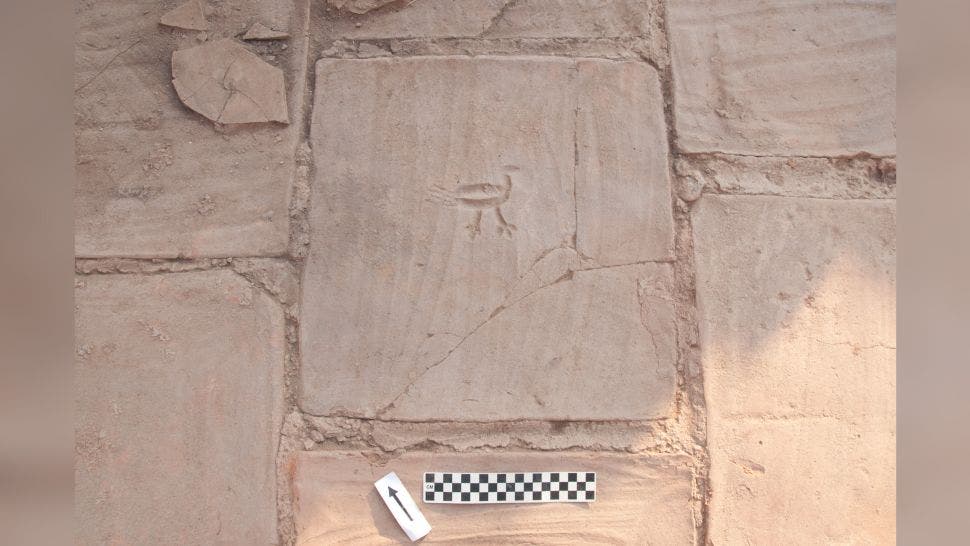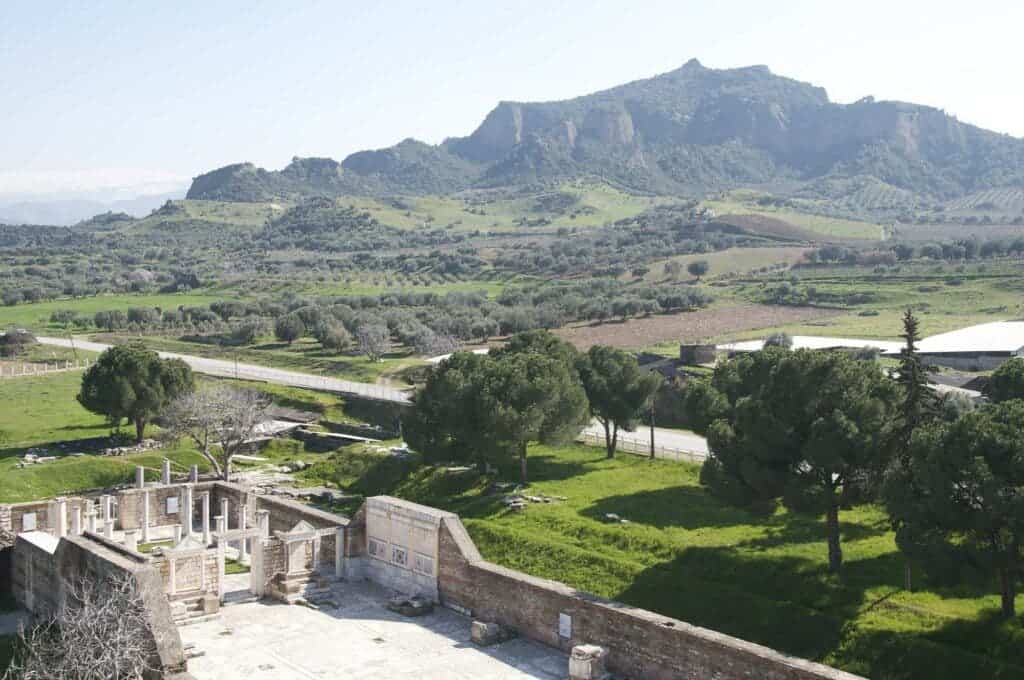Archaeologists excavating the ancient city of Sardis found a 1,500 year-old-house in fantastic shape. Not only is the house excellently preserved, but its tiles were decorated with puppy prints and chicken decorations.

It’s not as well-known as the likes of Athens or Rome, but in its heyday, the ancient city of Sardis would have rivalled them. During the Iron Age, Sardis was the capital of the ancient Lydian Empire in today’s Turkey. The city flourished for centuries, from the time of Alexander the Great and well into the Roman period, leaving behind numerous structures and artefacts that researchers have been excavating for decades.
Among these treasures, archaeologists also found a house which appeared to belong to military people — or at least, associated somehow with the military. The association is given away by five longswords found in the house — quite a lot, when you consider that only three other swords had ever been discovered at Sardis. The swords are Roman “spathae,” a type of longsword. In addition, the team also uncovered buckles and a lead seal, said Vanessa Rousseau, an adjunct professor of art history at the University of St. Thomas in St. Paul, Minnesota, during the joint annual meeting of the Archaeological Institute of America and the Society for Classical Studies.
As remarkable as they may be, something else is the star of the show: a group of floor and wall paintings and designs… of sorts. The tiles preserve paw prints of puppies, and even one hoof print of a goat. It’s not clear if this was an intentional design or not, but probably not: most likely, the animals walked on the tiles as they were drying up before being placed into the oven. The walls also feature paintings on plaster, mimicking curtains or drapes. Perhaps the most unusual find is a set of tiles with bird drawings. The marks are definitely intentional, and would have also been done prior to the tiles being fired.

The house was in use for some 200 years, before an earthquake destroyed it sometime in the seventh century.
Like many cities of this region, Sardis fell into decline in the sixth and early seventh centuries AD, and much of the city was abandoned (especially the lower part). However, the acropolis was described by the Greek historian Polybius as the “strongest place in the world”, and it remained an important stronghold throughout the Byzantine period.

The people of Sardis invented the world’s first coins, and throughout much of Antiquity, they were renowned among Greek kings for their wealth. They had thriving treaties with the civilizations of Mesopotamia, Egypt, and Greece.









